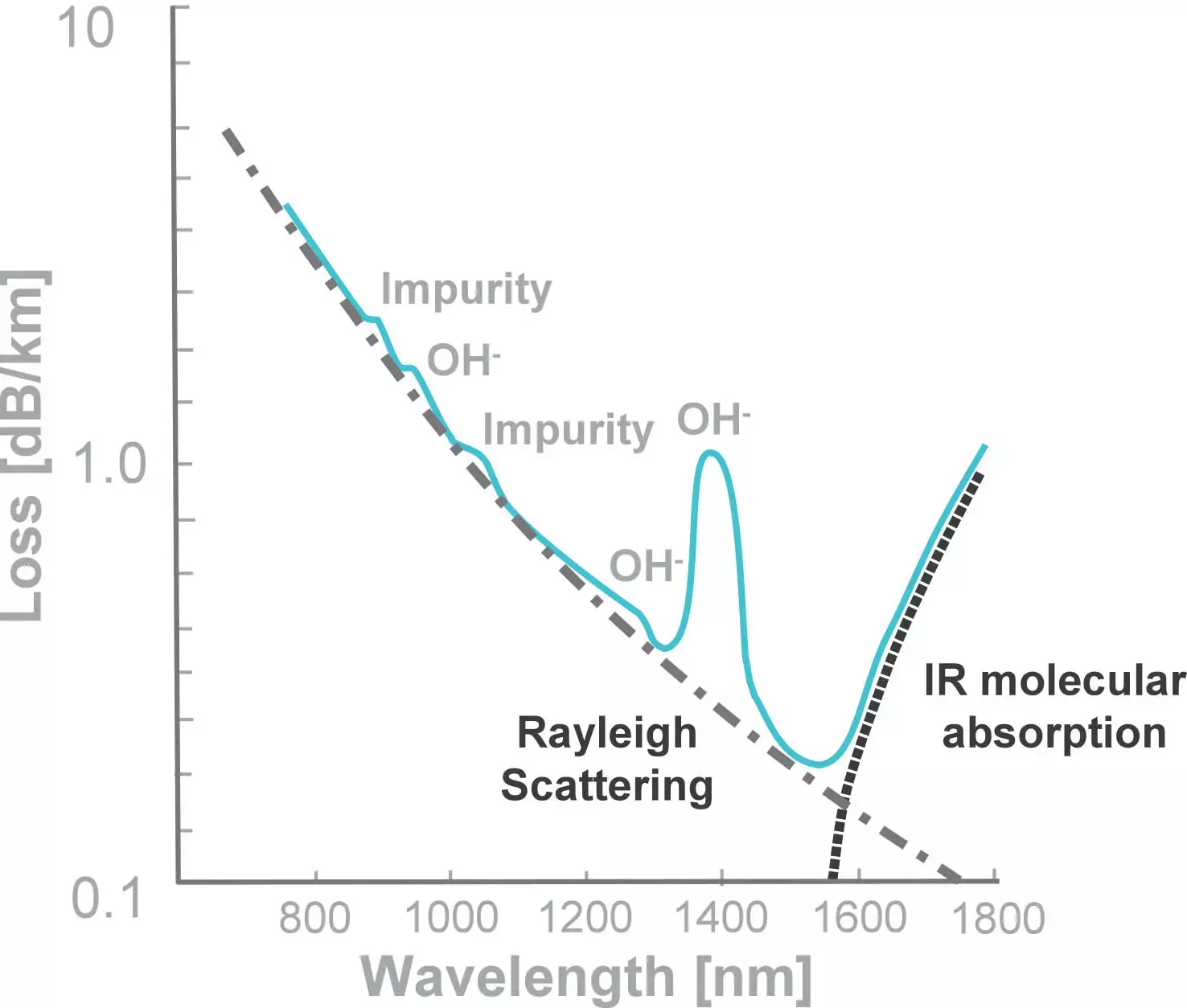Attenuation
When a fiber attenuates (also known as background loss), less power will be seen at the output than the input. Attenuation is important because it is a measure of how much of the light injected into the fiber reaches the other end. Attenuation determines either how much fiber you can use in an application or how much light your optical source must produce. Typical units are decibels per kilometre (dB/km).
In general, attenuation decreases with increasing wavelength for wavelengths below 1600nm. There are four independent loss mechanisms which combine to determine the overall attenuation of an optical fiber.
Waveguide imperfection
Losses may be caused by light-scattering from irregularities in the structure of the optical fiber and inclusions within the glass itself. This scattering is predominantly independent of wavelength and is negligible in all optical fibers manufactured by Fibercore.
Ultra-violet absorption
The UV edge (or ‘Urbach’ edge) is caused by electronic transitions within the constituent atoms of the glass. This scattering decreases exponentially as wavelength increases.
Rayleigh scattering
A linear elastic scattering process caused by the presence of sub-microscopic variations in the density and composition of the glass, leading to localised index variations. A fraction of the propagating light will scatter off these variations in all directions, some of which will end up propagating in the backwards direction. This scattering decreases according to a fourth-power law as wavelength increases (i.e. 1/λ4).
Infra-red absorption
The absorption of IR wavelengths causes vibration of molecular bonds of both constituent elements and impurities in the glass. This absorption occurs in distinct bands which become progressively closer together as wavelength increases. This mechanism makes the region beyond two microns (2000nm) highly absorbing and effectively unusable for transmission in silica-based glasses.
The way these loss mechanisms combine to form a typical attenuation curve is illustrated in the below graph

Water absorption, by OH- ions, occurs at numerous regions within the IR transmission spectrum of most optical fiber, often with a particularly strong absorption at around 1380nm. A variety of impurities which may be present at low levels in the glass also contribute to absorption at various points.
Related Terms: Absorption, Attenuation, Loss, Nonlinear Scattering, Power, Raman Scattering, Rayleigh Scattering, Scattering Mechanism